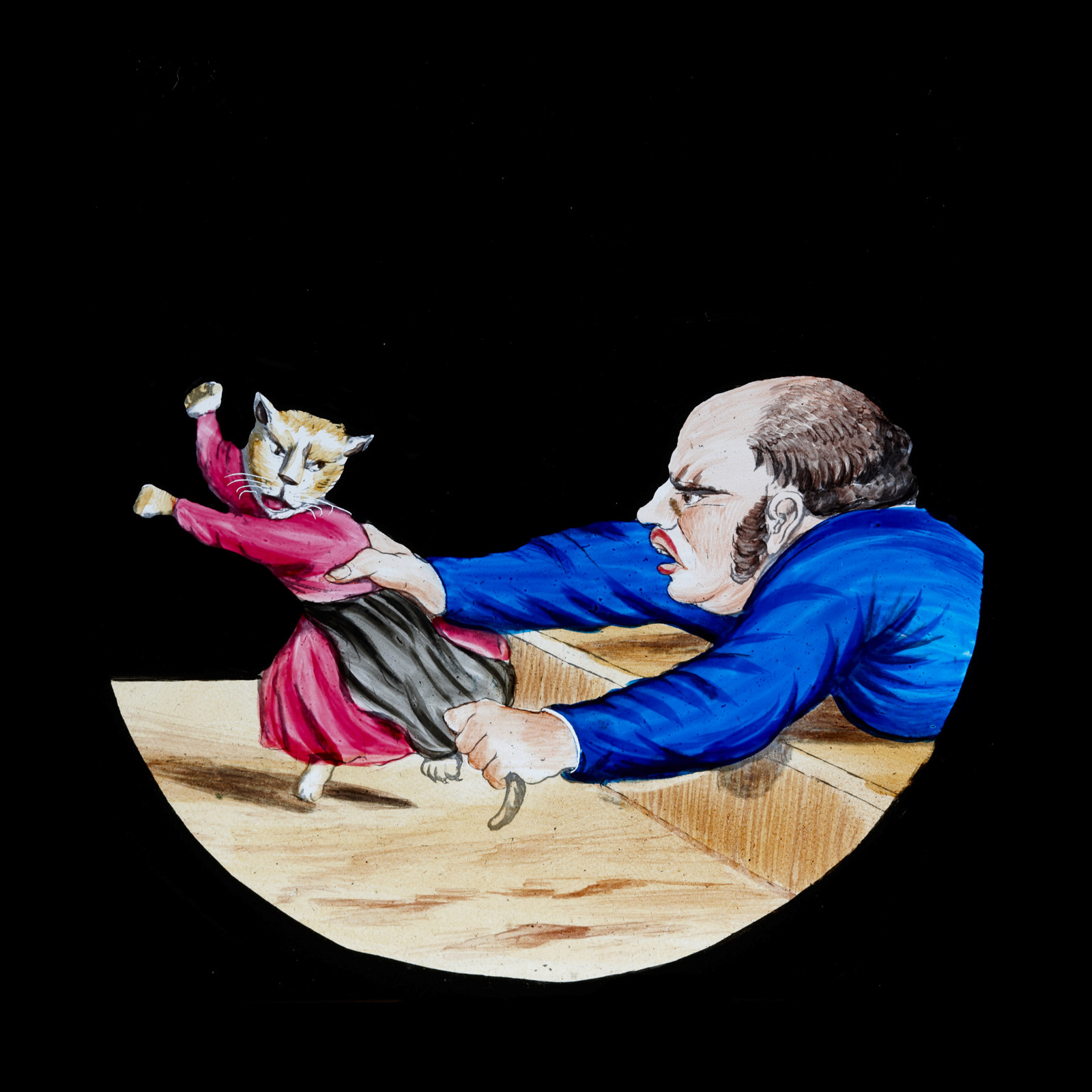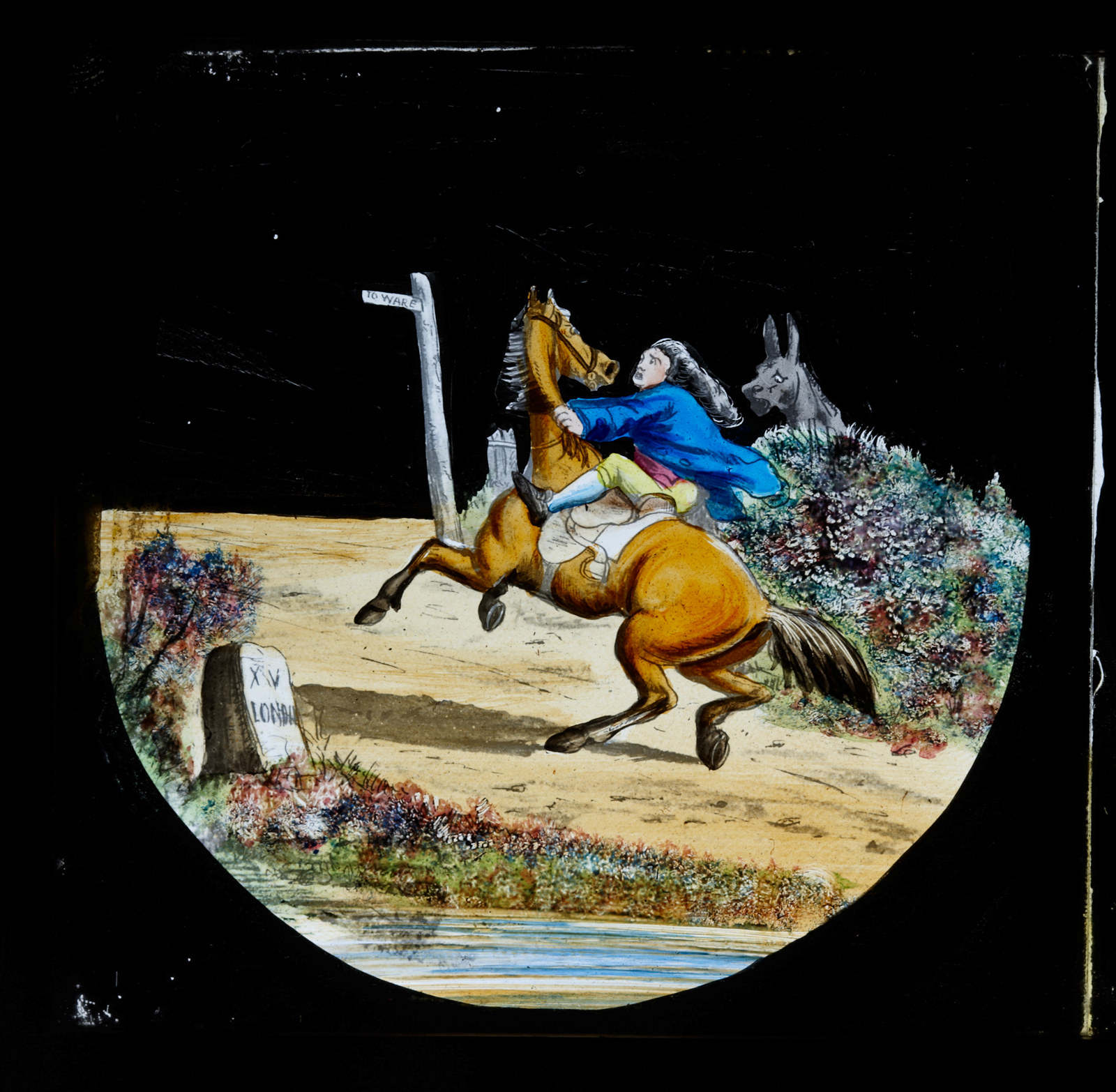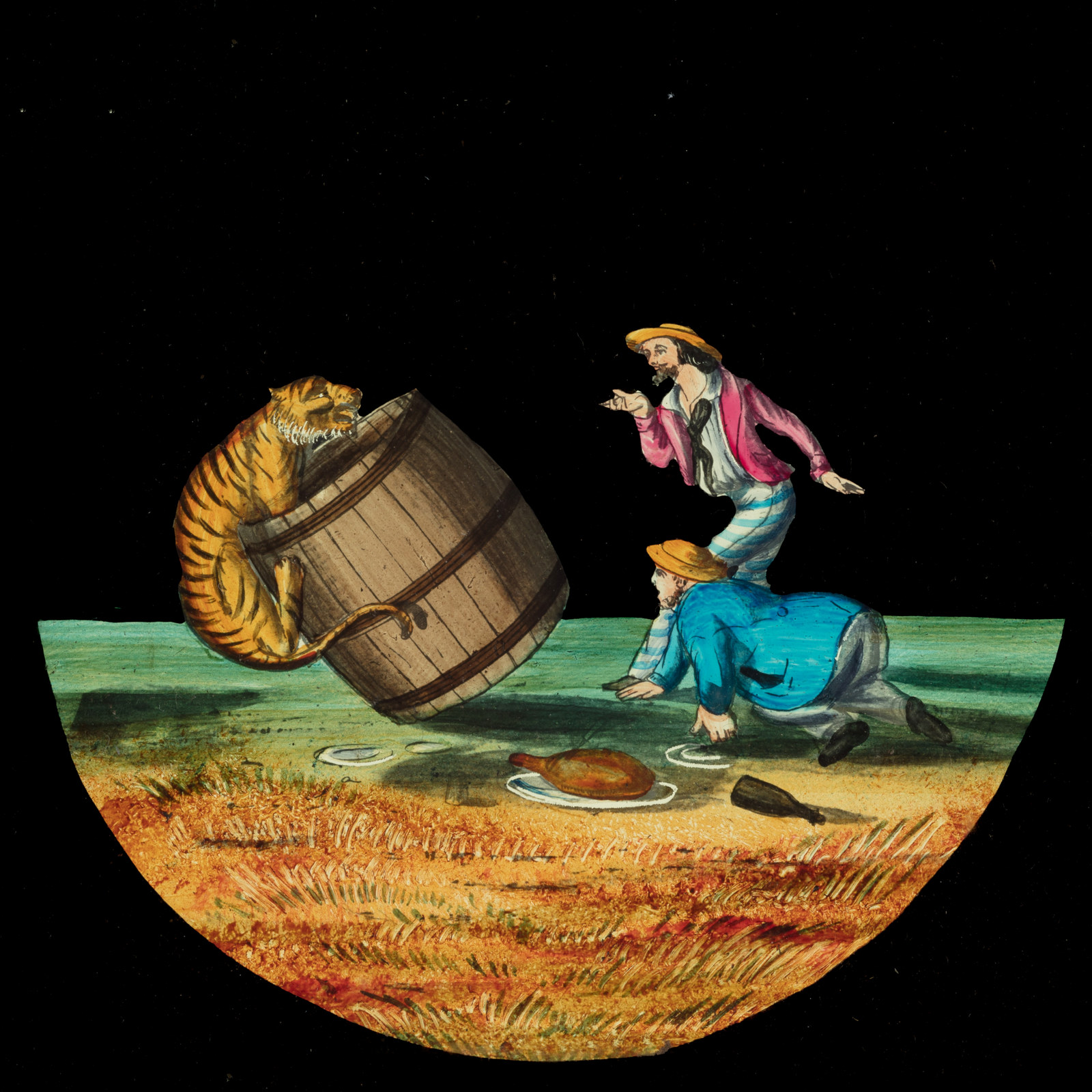Comic sliders
The Rouse Hill Estate collection of magic lantern slides includes ten comic slip slides, also called sliders or slippers.
These timber- framed slides, all manufactured by Newton & Co, comprise a primary slide with a hand-coloured image on a black background, as well as a secondary sliding glass plate with patches of black paint on particular parts of the otherwise clear glass. Moving this secondary slide provides animation to the scene by masking or unmasking parts of the painted slide. Newton & Co used in-house artists to paint their comic slides but the general subjects were rarely unique to a single magic lantern slide manufacturer.
The comic sliders at Rouse Hill include a ‘Village Dentist’ showing the extraction of a tooth; a slide titled ‘Cockney Fishing‘ showing a fisherman catching a kettle, not a fish; ‘Off to the Continent’ showing a man and his dog on Folkestone railway platform swept off their feet by a porter who isn’t looking where he is going.There is also a ‘Barber shaving’, a ‘Skipping rope nuisance’, a ‘Patent bedstead’, ‘Acrobats’, and a slide titled ‘Don’t you wish you may get it’ in which a monkey teases a chained dog but gets caught when the dog breaks his chain. The Rouse Hill collection also includes a damaged double slipping slide of a ‘Man swallowing rat’, one of the most popular comic slides of the nineteenth century.
Acrobat
Barber Shaving
Patent Bedstead
Village Dentist
Man swallowing rat
Off to the continent
Don't you wish you may get it?
Skipping rope nuisance
About the authors:
Megan Martin
Former Head, Collections & Access
Megan is the former head of Collections & Access at Sydney Living Museums. She has a particular interest in the working of the historical imagination, in teasing out the meanings of objects in museums collections and in crafting the stories that can be recovered/discovered through a close reading of those items of material culture.
Holly Schulte
Former Curator, Digital Assets
Holly was responsible for a range of collection related tasks with a focus on photography, digitisation and digital asset management. Her research interests address photography, collections, image making and associated technology.
Magic lantern
Published on
Related
Browse all
Pussy’s road to ruin
‘Pussy’s Road to Ruin’ is not a comic story but a cautionary moral tale for children

John Gilpin’s Ride
The fictional story of John Gilpin and his misadventures on a runaway horse was originally written as a comic ballad by English poet William Cowper in 1782

Tale of Tiger and Tub
‘Tiger in the Tub’ is a comic story, told in eight scenes, of two Anglo-Indian residents of Bengal who decide to have a picnic in the countryside